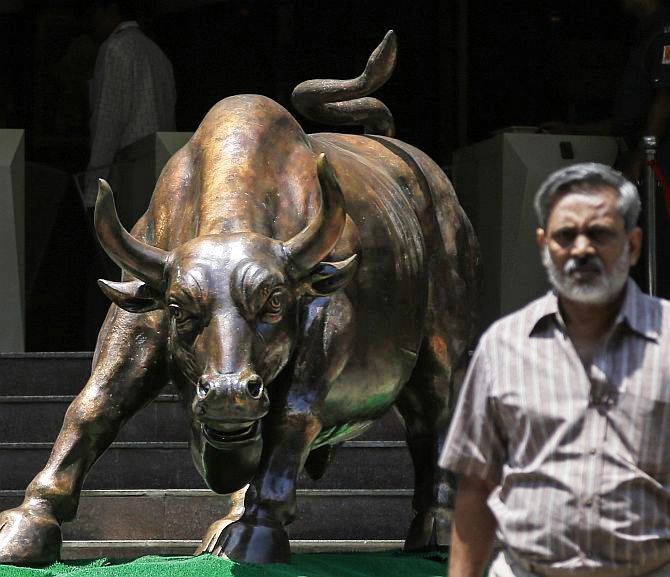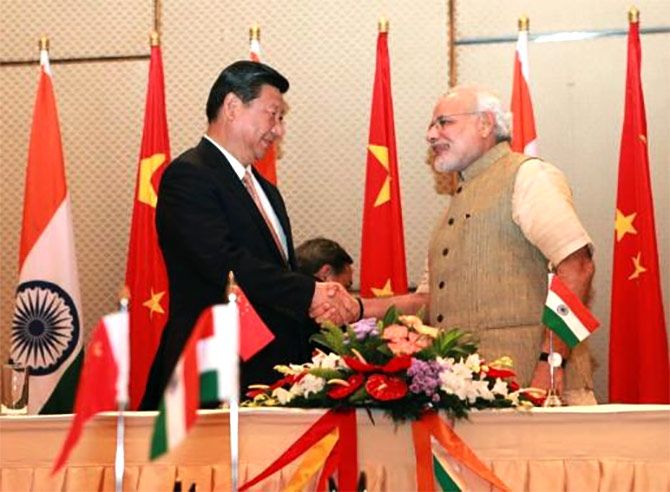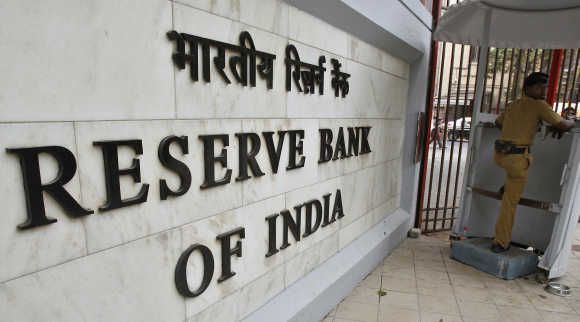The Indo-Chinese relationship remains on thin ice, but the markets have recovered on account of positive developments elsewhere, says Devangshu Datta.

In the 1960s, Nehru and Zhou En Lai coined platitudes about "Hindi-Chini Bhai-Bhai" even as China tightened its grip on Tibet and moved into the territory it claimed in Arunachal and Ladakh.
The Xi-Modi Summit meeting had some eerie resonances.
Even as they generated photo-ops at Sabarmati, Indian and Chinese armed forces locked into a border stand-off that continues at the time of writing.
The stock market did not really know what to make of it.
Quite apart from the border incidents, the summit started with airy estimates that the Chinese will invest $100-billion equivalent in order to outdo the Japanese (who have committed to $35 billion).
The reality was closer to $20 billion of Chinese investments, much of which would have come anyhow without the meeting.
Net-net, the Indo-Chinese relationship remains complicated and prickly.
Bilateral trade will grow (and so will Chinese surpluses on this account).

The Chinese will invest selectively in India and also offer Yuan-denominated exim deals in areas such as power and telecom equipment.
At the same time, the border disputes will remain alive. As of now, the Chinese economy is over four times the size of the Indian economy.
Given the relative rates of gross domestic product growth, the differential will increase.
As other writers have pointed out in this paper, there is no reason for the Chinese to take India's Great Power or even Regional Player aspirations seriously.
However, while the unchanged Sino-Indian relationship may not have enthused the market, clarifications of the US Federal Reserve's policy stance did bring some comfort.

The Fed will continue to taper; it might raise rates a little earlier than anticipated in 2015.
But the worst-case scenarios are ruled out and markets responded with relief.
The continuation of the Fed's taper will be compensated to some extent by the European Central bank's stated plans of loosening.
Japan continues with its own loose policy and the Chinese say they will follow a policy of targeted-easing.
So global financial markets are unlikely to dry up for lack of money.
This concurrence of monetary policy is unprecedented and it may have unpredictable consequences.
The Great Depression of 1929-37 was exacerbated and perpetuated by protectionist policies that destroyed trade links as every nation raised tariff and non-tariff barriers against trade.

The Crash of 2008 has been followed by every major player increasing money supply.
In mercantilist terms, one may see this as every major player attempting to weaken its currency!
Where does that lead? In geo-political terms, there was little substantive change in the fortnight under review, though there was excitement on several fronts.
Scotland did not de-link from the UK, after a historic referendum.
The Russia-Ukraine-European Union equation stayed as toxic as ever.
The US continued to talk about the modalities of taking on the Islamic State without really showing much appetite for this.
Crude and gas prices continued to trend lower.
The market is placing weight on the probability of low demand, given slow global growth.
It is ignoring the possibility of supply disruptions for the moment. In India, after 19 successive monthly hikes of diesel prices (interrupted by the elections), the current price matches production costs for oil-marketing PSUs.
This will be a great time for the Indian government to decontrol diesel, and also to rapidly rejig the domestic-gas-pricing policy.
Perhaps that is wishful thinking, but this sort of pricing sweet spot is unlikely to last too long.
The falling price of crude will have a beneficial impact on the trade balance and current account anyhow.
It is one reason wholesale price inflation has moderated to a five-year low, at 3.74 per cent in August 2014 versus August 2013. The consumer price index or CPI is at 7.8 per cent for the same period. Core retail inflation (CPI without food or fuel) is at 6.9 per cent, while core wholesale price index is at 3.5 per cent.

If this moderating trend continues, the Reserve Bank of India could make the upper end of its targeted band of eight per cent CPI by January 2015.
The December 2014 index will have to be within eight per cent of December 2013 - that is, the December 2014 CPI will have to be at 149 or lower, given that the December 2013 index was at 138.
Industrial expansion has slowed considerably with the July 2014 Index of Industrial Production up by only 0.5 over July 2013.
While this was positive expansion for the fourth month in a row, the momentum is poor. The improvement was patchy. Manufacturing and consumer durables contracted in July 2014 versus July 2013.
Power generation grew and so did offtake of intermediates.
On the basis of this data. the pump-priming effect of the general elections has ended and from now on, expectations of acche din will be matched against reality by the electorate.
The latest by-elections also indicate that the honeymoon seems to be over.
There were some hopes that the central bank would cut policy rates in its September 30 policy review, given moderating inflation and the industrial situation.
But this appears unlikely now, given hawkish statements from the governor. Raghuram Rajan is probably going to wait till January 2015 at the least and several analysts don't expect a hike in fiscal 2014-15 at all.
The market has recovered from a brief bout of jitters, which pulled the Nifty down to 7,930.
A purely technical view would say range-trading between 7,900-8,180 is the likely pattern through the September settlement this Thursday.
Breakouts above 8,180 to a new all-time high, or a deeper correction to below 7,900 will be of interest.
The foreign institutional investors are still net positive, while domestic institutions continue to sell.











